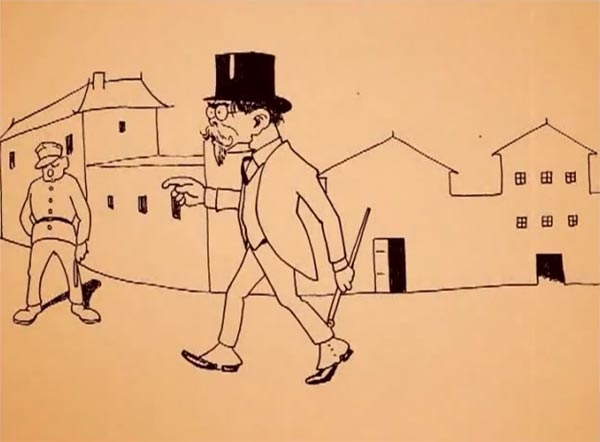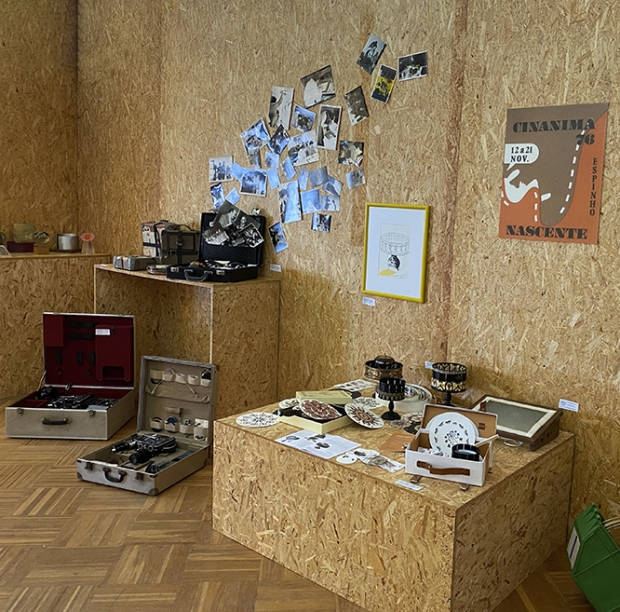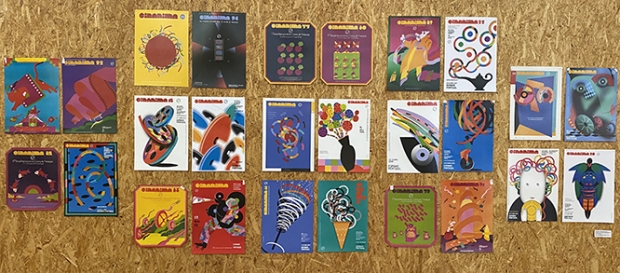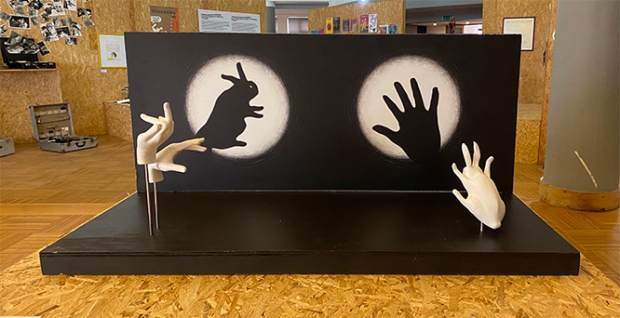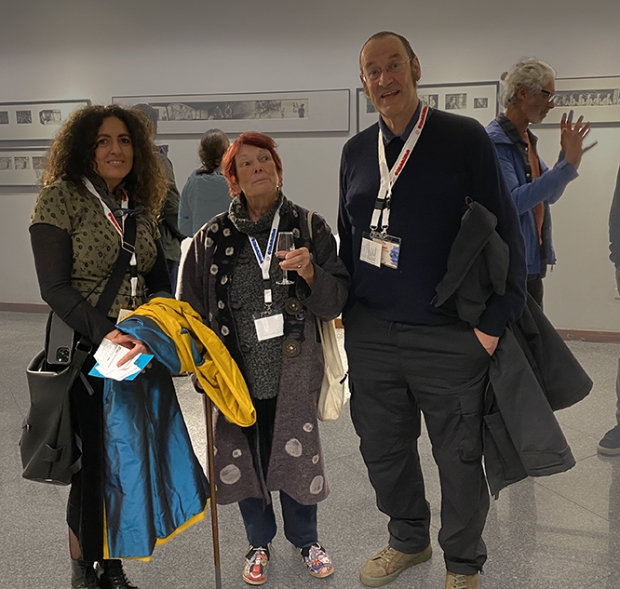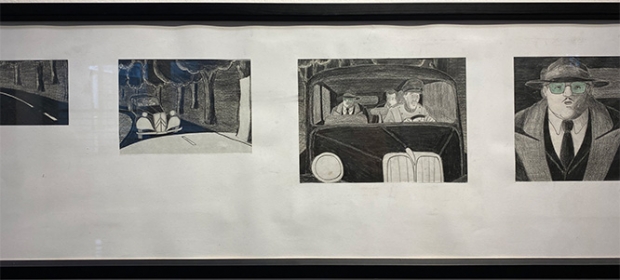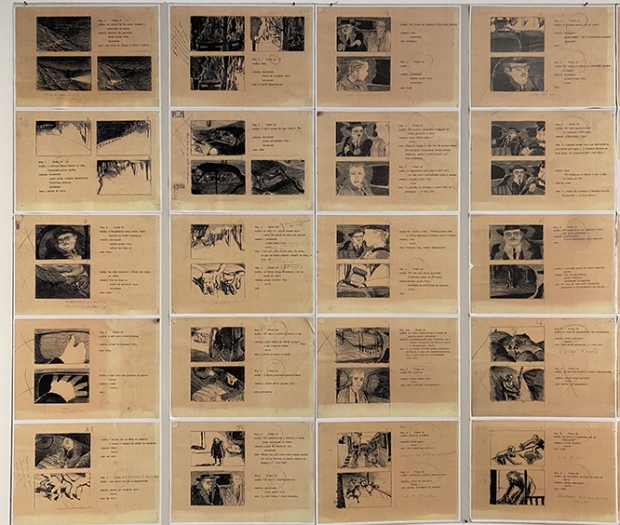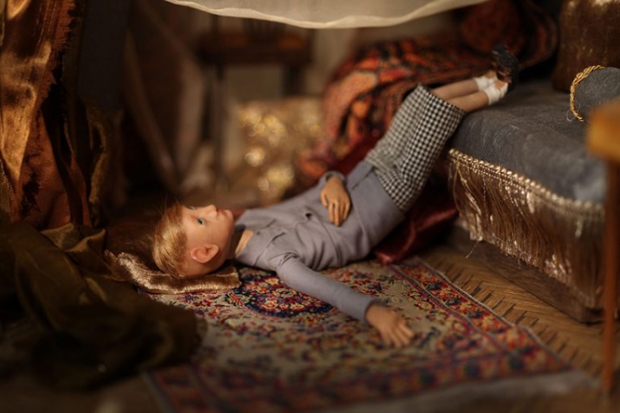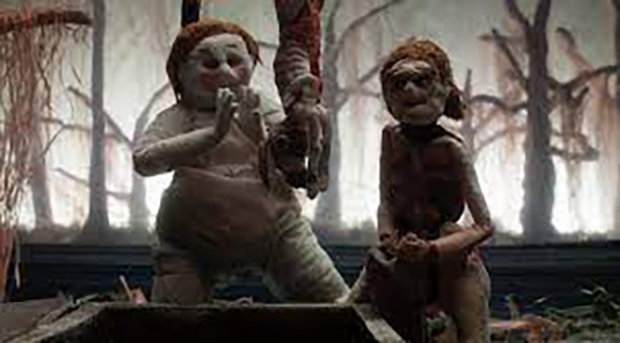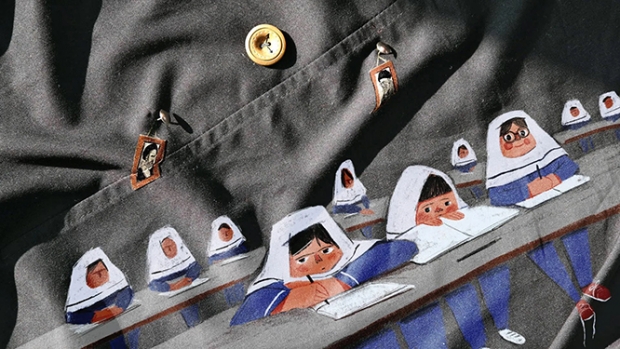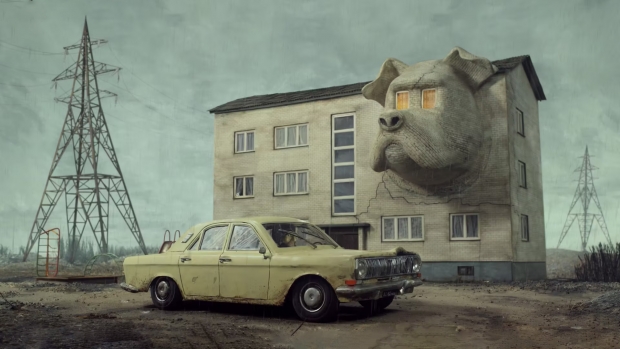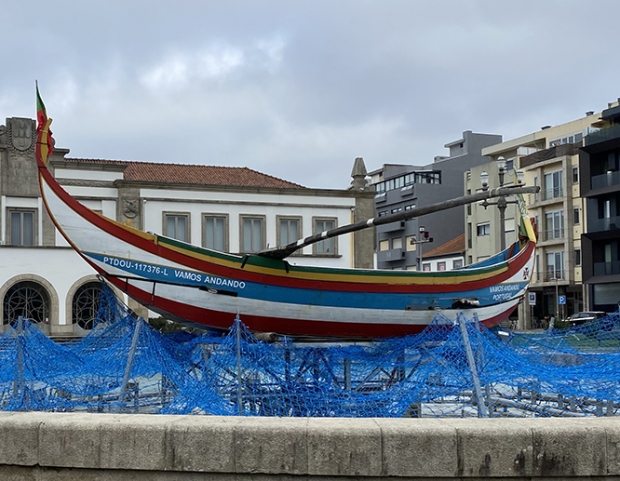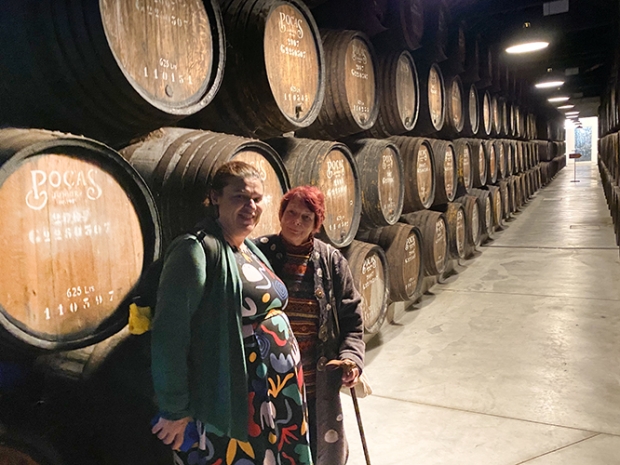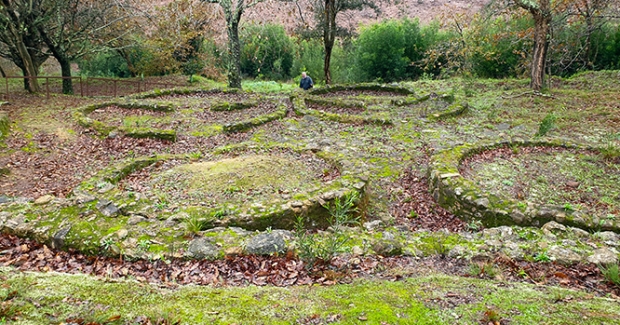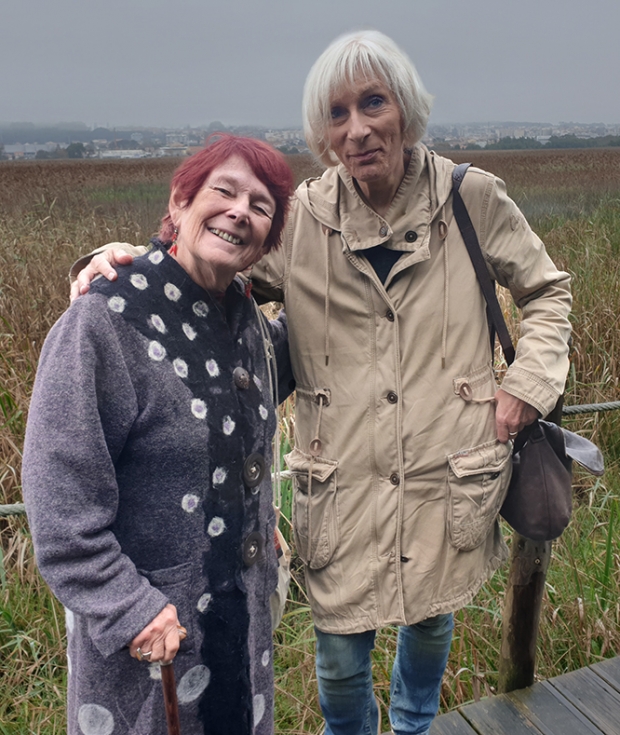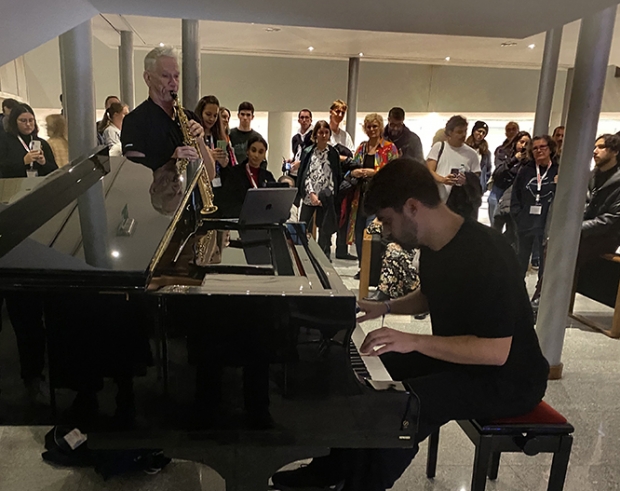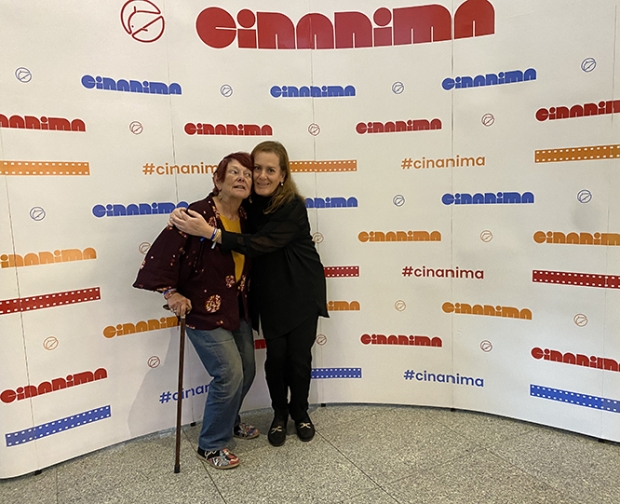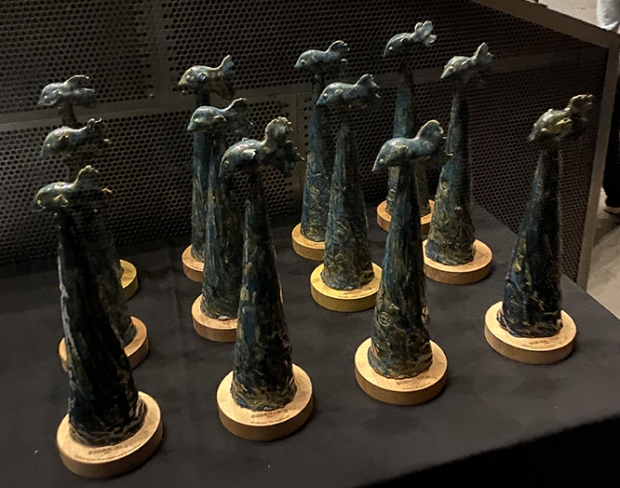Some festivals are such a pleasure to attend that I want to go back every year, and Cinanima is one of those festivals.
CELEBRATING 100 YEARS OF PORTUGUESE ANIMATION AT CINANIMA
Some festivals are such a pleasure to attend that I want to go back every year, and Cinanima is one of those festivals. The programming is always excellent, the hospitality is superb, and Cristina Lima who is the heart and soul of the festival makes me feel right at home.
Cinanima is the oldest animation festival in Portugal and the third oldest in the world. Its Grand Prix-winning film is automatically qualified for the Oscars.
2023 marked the 100th anniversary of Portuguese animation. O Pesadelo do Antonio Maria (The Nightmare of Antonia Maria) directed by caricaturist Joaquin Guerreiro was the first Portuguese film. It was thought to be lost until Antonio Gaio, director of the Cinanima Festival from 1980 until he died in 2015, discovered 150 original drawings from the film in a bookstore. A reconstruction of the film using the original drawings was completed in 2006.
The 2-minute film is drawn in pencil on a white background. In it, Antonio Maria da Silva, four time President of the Republic of Portugal (1910 to 1926), walks home and goes to bed. Instead of a peaceful night’s sleep, he has a nightmare that an angry crowd in the street outside of his home is demanding an end to food shortages and crying out for freedom from an oppressive regime.
To celebrate the 100th anniversary, the festival mounted an extensive exhibition about the history of Portuguese animation. Along with very early animation devices such as an ornate zoetrope, a praxinoscope, and a magic lantern, there were film posters as well as original artwork from films. There was also a continuous loop of noted Portuguese animation projected on a screen in the space.
One area of the exhibition was devoted to “47 years of Cinanima in posters”. The selection of festival posters, designed by Joao Machado, was a trip down memory lane for anyone, like me, who has been coming to the festival for many years. Machado is a renowned Porto graphic designer known for his animated interactive posters. Several of them in the exhibition could be brought to life by clicking an app next to the poster.
The exhibition was a lovely tribute to a century of Portuguese animation and the Salaø de Piscina (swimming pool saloon) was the perfect location for the exhibition. The large room offered a spacious area for displaying memorabilia without feeling cramped or crowded.
The Cinema Lobby Exhibition Gallery was the sight for a special exhibition of Abi Feijo’s 1963 film Os Salteadores (The Outlaws). With original plans and drawings from the film on display, we could see the techniques that Abi used to create the shadowy effects and how he designed and constructed the film with pencil on paper to build tension.
The inspiration for the film was the short story Os Salteadores from Jorge de Sena’s book Os Grao – Capitaes. The 14-minute film takes place in the 1940s, during the reign of terror of the Salazar dictatorship (1932 to 1968), a dark period in Portuguese history. Three men in a car at night on a trip along the Portuguese coast are discussing the identity of a group of men who were captured and executed years before when the Spanish Civil War was drawing to a close. The three perspectives merge into one single discourse revealing social attitudes and ideological standpoints concerning Fascism in Portugal. The film premiered at the Cinanima International Animation Festival in 1993. Abi received the City of Espinho Special Jury AwardAward for his film.
It seems like 2023 was the year of toxic relationships on film between family members, government policies, or a person’s inner demons. In her 15-minute film, The Family Portrait, Lea Vidakovic has set her film on a quiet Sunday afternoon in an aristocratic family home just before the First World War. Andras, master of the household, and his young daughter Zsofia are caught by surprise when Andras’ brother Zolten pays an unexpected visit, along with twelve members of his family. It doesn’t take long for the visitors to wreak havoc and destruction on the entire house. You can feel the tension build in Andras and his daughter as a terrific strain is put on the family relationship.
The beautiful puppets were all made by Lea. She also gives attention to detail for all of her props right down to the crumbs of pastry on a plate. The color pallet of the film is evocative of an early 20th-century painting. Visually the film is gorgeous and the story keeps you engaged and wondering what these unexpected visitors can do next. When Lea was creating the basic plot of the film, she was inspired by a quote from the Japanese Buddhist thinker and peace activist Daisaku Ikeda, “Every family has its specific circumstances and problems that only it can truly understand”. The film did win the prestigious Jury’s Special Award.
It’s a nightmare that I wanted to bring to the screen” Joachim Herisse, director of Skinned says about his stop-motion film. He certainly did create a film that is creepy and yet you can’t take your eyes off of it. Siamese twins joined at the leg, live in the middle of a swamp in an old, run-down house. Mentally opposite, one sister is fat with an insatiable appetite and the other one is skinny. One sister wants freedom while the other one wants them to stay together, just as they are.
Between the sisters' raising and endlessly killing rabbits to satisfy the fat sister's insatiable hunger for meat and the brutal death of one sister, there is plenty of gore and horror. The film is so beautifully animated and the story is well worth the 15 minutes that you spend watching it. The jury awarded Skinned a Commendation for the Best Art Direction, which the film definitely deserved.
In a year of very strong animated films, I was surprised that Our Uniform was selected as the Grand Prix but it is a worthy choice. First-time animator Yegane Moghaddam’s film is painted directly onto the cloth used for making Iranian girls’ school uniforms. The uniforms represent to Yegane a form of robbing women of their individuality and personalities, thus denying them any self-esteem.
The Iranian film is a personal story as Yegane unfolds her school memories through the wrinkles and fabric of her old school uniform. Along the way, she explores the roots of the idea that she is nothing but a female that was ingrained in her during her school years.
Our Uniform is Oscar nominated which I hope will give more people the opportunity to watch this film. I look forward to seeing more from this talented young animator who thinks outside of the box as far as technique is concerned.
Along with the screenings and exhibitions, there were six masterclasses. Estonian animator Priit Tender was on the feature film jury. His latest film Dog Apartment was short-listed for the Oscars. Sardonic and surreal, the stop-motion film was inspired by a poem by the Estonian surrealist Andres Ehin about an aging ballet dancer who is fighting his mundane life, in the rut of a boring routine. It is one of my favorite films making the festival rounds right now.
The 14-minute film was produced at Nukufilm Studio. Established in 1957, Nukufilm is renowned for its stop-motion work and the creation of beautifully crafted puppets and sets. Dog Apartment is as lovely to watch as the story is engaging. During his masterclass, Priit talked about the creative process and how he works.
Serbian animators Ana Nedeljkovic and Nikola Majdak’s films are known for their political satire and biting wit. During their masterclass, they talked about how their films come from personal experiences that they translate into animation.
Joao Gonzales taught his audience how to take an idea and turn it into a reality in his presentation of from the subconscious to the screen. He certainly knows how to do it because his short film, Ice Merchants, was nominated for an Oscar and won numerous festival awards last year.
The presentations by the Portugal Film Commission and the symposium on Perspectives on Portuguese Animation were designed especially for the Portuguese audience. One project that I found particularly interesting was a meeting of secondary school teachers and students from Espinho and the neighboring town of Ovar to discuss ideas for the creation and production of an animated film to be premiered at Cinanima in 2024. I am very curious about what they come up with. I look forward to seeing it at the festival in November.
Cinanima strives to develop film literacy among children and young people. Monday through Friday in the Casino Espinho Auditorium there were screenings designed specifically for school groups. In addition to the programs during the festival, Cinanima offers six programs of short films to be screened in the classroom year around. The various programs are age-appropriate for either elementary, middle or high school students. Scripts are also provided to the teachers to help facilitate discussion about the films.
For years Nik and I have had a favorite little bar down at the end of the beach where the fishing boats came in. Over the years the boats have disappeared and so did the fisherman’s bar. This year when we walked to the end of the beach there was a new little bar with no tourists, just locals and inexpensive wine. It was a lovely surprise.
This year the festival organized two excursions. Festival guests went by train to the Pocas Cellars wine tasting in Vila Nova de Gaia. Their ports are very delicious and the tour is fascinating. It is quite amazing to stand in a room with all of those beautiful old kegs full of port
We went on a guided tour of the archaeological and environmental landmarks of Castro de Ovil and Paramos-Esmoriz Lagoon. Castros were a type of settlement that people on the Iberian Peninsula built a few centuries before Christ. The castros were fortified villages located on hills with long, clear views of the surrounding terrain. The villages were protected by a stone wall and/or a deep moat.
Castro de Ovil is located on a hill with the Paramos riverbank to the south and southwest and a deep moat to the north and northeast. Archaeological work began there in the early 1980’s. The remains of the 13 structures date back to three or two centuries BC and appear to have been abandoned sometime during the first century. We had an excellent tour guide who gave us thorough explanations about what we were looking at.
From Castro de Ovil we went to Paramos – Esmoriz Lagoon which has a long wooden walkway through the lagoon. With over 100 species of birds, it is an especially important location as a stop-over point during migration season. It was quite a long walk and by the time I got back to the bus which took us to lunch at a restaurant on Paramos Beach, I was hungry and thirsty.
One evening Nik and Joao Gonzales played a small concert in the theatre lobby bar area. It sounded especially nice since Joao had a lovely grand piano to play on; quite a nice surprise.
When I am at a festival the festival programmer and/or director are too busy to spend much time visiting so it was a great pleasure to spend quality time with good friends Andrea Bauer, head of programming at the Trickfilm Festival in Stuttgart and Maria Anestopôulou, Director of Anima Syros in Greece. Nik and I shared several leisurely meals with the ladies. I have fond memories of good food, lovely conversation, and lots of laughter.
Nik and I first met Andrea on the beach in Espinho many, many years ago. We were walking our two dogs on the beach and a woman came up and asked if she could pet our dogs. We started talking and discovered that we were all there for the festival. By the end of the week, we had become friends and Andrea invited us to her festival. Since then, we have never missed the Trickfilm Festival.
I can’t thank Cristina Lima enough for inviting me to be on the festival selection committee and for her friendship throughout the years. Thank you so much to the festival for their lovely hospitality. As always, I had a wonderful time.
The 2024 edition of the festival will take place from 8 to 17 November
You can find out more about Cinanima and how to submit a film at: www.cinanima.pt
Winning Films
Short Film Jury: Alberto Vazquez, Britt Raes, Jim Van Der Kegl, Joao Gonzales, and Maria Anestopoulou
GRAND PRIX ESPINHO CITY AWARD: Our Uniform, Yegane Moghaddam, Iran
JURY’S SPECIAL AWARD: Family Portrait, Lea Vidakovic, Croatia
ALVES COSTA AWARD FOR THE BEST SHORT FILM UP TO 8 MINUTES: Island, Michael Faust, Israel
BEST SHORT FILM OVER 8 TO &§ MINUTES: The Garden of Heart, Olivér Hegyi, Hungary
COMMENDATION FOR THE BEST ART DIRECTION: Skinned, Jochim Hérissé, France
COMMENDATION FOR THE BEST SOUND DESIGN: Telsche, Sophie Colfer, Poland
Student Film Jury: Nikola Majdak, Tessa Moult-Milewska, and Wiola Sowa
GASTON ROACH AWARD FOR BEST STUDENT FILM: Crab Day, Ross Stringer, United Kingdom
STUDENT FILMS SPECIAL MENTION: Friendly Fire, Tom Koryto Bluemen, Israel
STUDENT FILMS SPECIAL MENTION: Pipas, Lili Toth, Hungary
National Competition Jury : Anders CNarverud Moen, Joao Levezinho, and Regina Machado
ANTONIA GAIO AWARD: Quase Me Lembro, Dimitri Mihajlovic and Miguel Lima
SPECIAL MTION ANTONIA GAIO AWARD: Sopa Fria, Marta Monteiro
YOUNG PORTUGUESE DIRECTOR AWARD UNDER 18 YEARS OLD: A Princesa Que Venceu O Medo, Association de Ludotecas do Porto
SPECIAL MENTION YOUNG PORTUGUESE DIRECTOR UNDER 18 YEARS OLD: A Vida Da Minha Gata, Matilde Dionisio
YOUNG PORTUGUESE DIRECTOR MORE THAN 18 to 30 YEARS OLD: Home, Filipa da Costa Gaspar
SPECIAL MENTION YOUNG PORTUGUESE DIRECTOR MORE THAN 18 to 30 Years Old: Enxoval, Mariana Pardal Jacinto
FEATURE FILM JURY: Andrea Bauer, Igor Prassel, and Pritt Tender
GRAND PRIX FEATURE FILM: Four Souls of Coyotte, Aron Gauder, Hungary
AUDIENCE AWARD; Rosemary A.D. (After Dad), Ethan Barrett, United States

